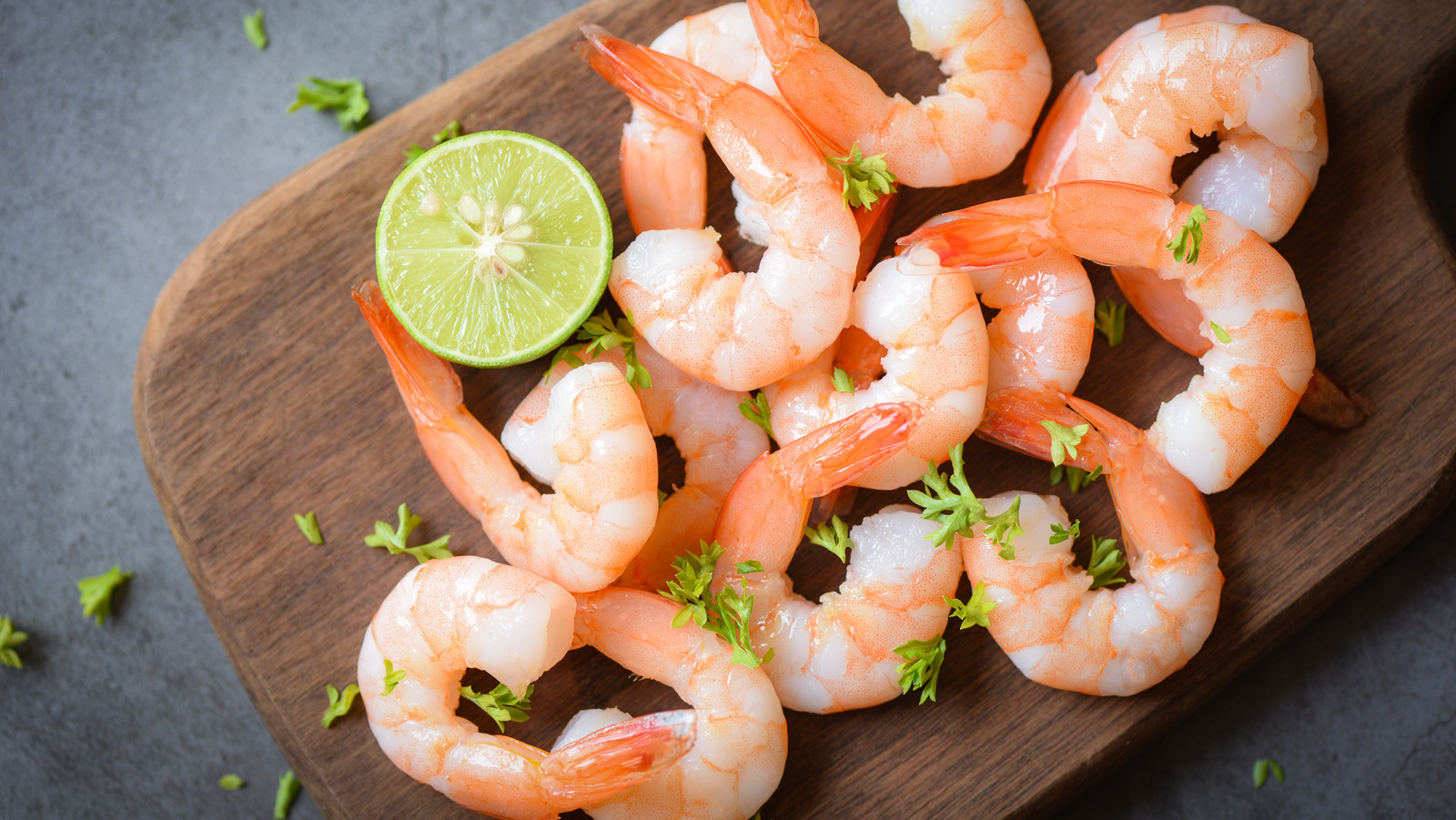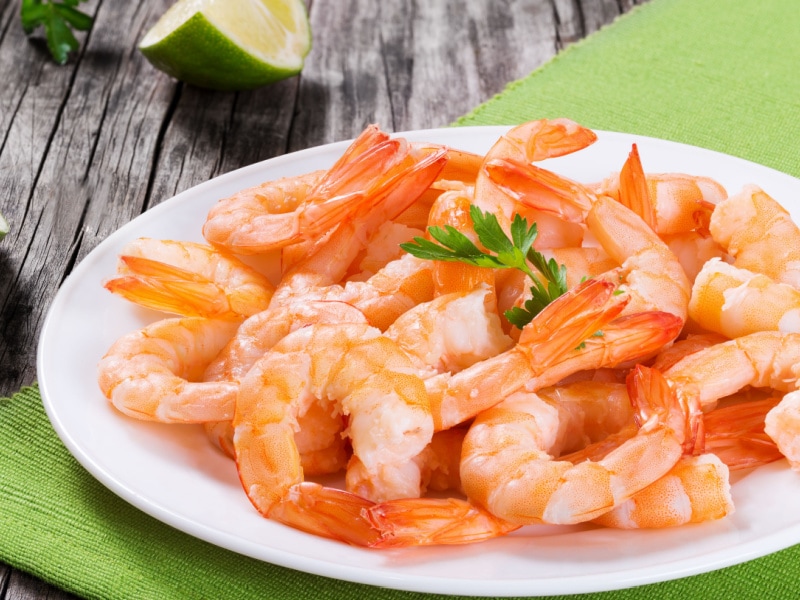There’s no doubt that if you like seafood, shrimp is your favorite. But have you ever thought about how to tell if shrimp is bad?
So, it’s important to know how to identify the signs of spoilage to extend its shelf life.
I know it can be hard to toss out your favorite shrimp dishes. But remember when in doubt, throw it out!.
Shrimp is one of the most popular seafood ingredients used around the world. From scampi to shrimp cocktail and cioppino, there are endless ways to prepare and enjoy this versatile shellfish. However, like any perishable food, shrimp doesn’t last forever. Eating spoiled shrimp can cause food poisoning, which leads to unpleasant symptoms like vomiting, nausea, and stomach cramps.
So how can you tell if the shrimp in your fridge or freezer has gone bad? Here are some tips to determine shrimp freshness and safety before eating it
Check The Color
The color of raw, fresh shrimp should be grayish white or translucent Cooked shrimp turns bright pink. Any spots or unusual discoloration on raw or cooked shrimp is a sign of spoilage
Fresh raw shrimp may have a bit of natural green, blue, or brown color. But if the shrimp flesh itself looks faded, grayish, or milky, it’s best to discard it. Cooked shrimp also starts fading to a dull gray when it goes bad.
Give It A Sniff
Your nose often knows when seafood has gone south. Fresh raw shrimp has a mild salty or ocean-like aroma. Cooked shrimp smells similar with a briny, seafoody scent.
Shrimp that smells unpleasantly fishy, ammonia-like, or sulfurous is past its prime. Any pungent or strong odors are a big red flag to throw out the shrimp.
Feel The Texture
Press the shrimp with your fingers. Fresh shrimp feels firm and springy. As it starts deteriorating, the flesh becomes mushy and slimy.
Check the surface too. Fresh shrimp looks smooth and shiny. If you notice any stickiness, tackiness, or thin mucus-like film on the shrimp, it has gone bad.
Check For Discoloration
In addition to smell and texture, closely inspect the physical appearance of shrimp. Signs of spoilage include:
- Black spots or streaks on the flesh
- Dryness or tacky areas
- Dull, fading color
- Mold growth
Any of these visible cues indicate the shrimp has spoiled and may be unsafe to eat. When in doubt, throw it out.
Follow Proper Storage Times
How long shrimp stays fresh depends on whether it’s stored in the fridge or freezer:
- Raw shrimp lasts 1-2 days in the fridge. Cooked shrimp keeps 3-4 days.
- Shrimp can be frozen indefinitely but loses quality after 3 months.
- Never leave shrimp out at room temperature for over 2 hours. Discard anything left out over an hour if temperatures exceed 90°F.
Storing shrimp properly and adhering to recommended time limits reduces the chances of it going bad prematurely.
Check The Sell-By Date
The sell-by or use-by date on shrimp packaging offers guidance but shouldn’t be considered an expiration date. Smell, color, and texture take precedence in determining freshness.
Shrimp that’s a day or two past its date may still be fine. But if it’s grossly expired, it’s not worth taking a chance. Adhere to the date on thawed frozen shrimp which typically has a shorter usable timeframe after thawing.
Is Previously Frozen Shrimp Risky?
Commercially frozen shrimp is very common. Freezing stops bacterial growth and parasites, letting shrimp keep a long time without spoiling. Just make sure thawed shrimp smells fresh with no off odors or tacky texture.
Most shrimp sold in the U.S. comes from abroad. It’s usually processed, treated for parasites, frozen, and thawed before sale. Don’t assume unfrozen “fresh” shrimp is automatically safer. As long as you follow proper storage and handling, previously frozen shrimp poses minimal risks.
Can You Save Spoiled Shrimp?
No. Once shrimp has gone bad, there is no way to salvage it. Bacteria multiply rapidly at room temperature. No amount of cooking kills all toxins from spoiled seafood. Do not taste, eat, or even cook shrimp that shows signs of spoilage.
Any leftovers from peeled, cooked shrimp should also be discarded if they look or smell funky. Don’t take chances with seafood that may be unsafe.
How To Avoid Food Poisoning
To steer clear of illness, buy shrimp before its sell-by date and use quickly. Store shrimp in a coldest part of the fridge, tightly wrapped. Never thaw frozen shrimp at room temperature or re-freeze thawed shrimp.
Cook shrimp thoroughly until opaque and flaky. An instant-read thermometer should reach 145°F. Shrimp cooked this way won’t harbor harmful bacteria. But always discard shrimp that looks or smells suspicious before cooking.
Practice good hygiene. Avoid cross-contamination between raw and cooked shrimp. Wash hands, utensils, surfaces after handling raw shrimp. Those with compromised immune systems should take extra care with higher-risk seafood.
When dining out, make sure shrimp dishes are fully cooked through. Only eat fully cooked shrimp, not raw or undercooked. If unsure, ask how the shrimp was prepared.
What To Do If You Get Sick From Bad Shrimp
Hopefully you’ll never experience shrimp-induced food poisoning. But if you develop symptoms like nausea, vomiting, fever or diarrhea after eating questionable shrimp, seek medical care right away.
Foodborne illness from seafood can come on quickly and severely. Tell your doctor about the suspect shrimp so they can properly diagnose and treat any bacteria-related infection or toxin.
Severe dehydration from food poisoning requires medical support. Don’t take anti-diarrheal medication or induce vomiting which can worsen shrimp-related illnesses. Focus on hydration and getting enough fluids containing electrolytes.
Most shrimp-related food poisoning runs its course in a day or two. But symptoms persisting longer than 3 days needs further medical investigation to identify the exact cause and proper treatment. People with existing health conditions are more vulnerable to complications from foodborne shrimp pathogens.
The Bottom Line
It’s easy to tell when shrimp has gone bad if you know what to look for. Discoloration, foul odors, sliminess, and uncharacteristic textures are all giveaways. Storing and handling shrimp properly reduces spoilage risk. But once shrimp shows signs of deterioration, there’s no way to salvage it. Follow these tips to determine shrimp freshness before cooking. And if in doubt, remember – when shrimp goes bad, throw it out! Being cautious avoids the misery of seafood-induced food poisoning.

How to Tell If Cooked Shrimp Is Bad
Ever wonder how to tell when shrimp that has been cooked has gone bad? Here are some tips:
- Use your nose. It’s a powerful organ that can help you tell if cooked shrimp has gone bad. It’s probably not safe to eat something that smells fishy or sour.
- Make sure the shrimp is cooked. It should feel firm but slightly springy when you touch it. It has gone bad if it feels slimy or mushy.
- Check the color. When shrimp is done, it should be pink. It might not be good if it looks gray or has dark spots.
- When you’re not sure if your cooked shrimp is still good, look at the date you cooked it. Shrimp should be eaten within 2-3 days of cooking it.
- If something about your cooked shrimp doesn’t seem right, it’s best to throw it away.
How to Tell If Frozen Shrimp Is Bad
If you enjoy eating frozen shrimp, it’s important to know how to tell if it has gone bad. Here are some tips to help you out:
- Check the packaging for ice crystals or frost. This could mean that the shrimp has been frozen and then thawed, which can make it taste and be less fresh.
- Look out for freezer burn. This can happen if the shrimp has been frozen for too long, usually more than three months.
- If you notice any signs of spoilage, like a funny smell or changes in color, Something like this would be found on fresh shrimp, and it means the shrimp is not safe to eat.
- Do not eat the shrimp if it does not look, smell, or feel right. It is better to be safe than sorry and throw it away.

How do you tell if cooked frozen shrimp is bad?
How do you know if shrimp is bad?
If you notice any spots on your shrimp, it’s a good idea to toss it. In contrast, cooked shrimp should have a bright pink color — not faded or gray. You’ll also order a poor odor from shrimp that needs to be thrown out. Many folks relate the smell of bad shrimp to ammonia.
How can you tell if shrimp is spoiled?
To determine if shrimp is spoiled, consider its smell, color, and texture. Strong ammonia or sour odor, faded or discolored spots, and a slimy or mushy texture are all clear indicators of spoiled shrimp. Always remember, when in doubt, it’s best to discard it to ensure food safety.
How do I know if my shrimp needs to be trashed?
Numerous sensory cues will let you know when your shrimp needs to take a trip to the trash bin. The first is discoloration. Raw, fresh shrimp should be gray or white in color and may even appear translucent. If you notice any spots on your shrimp, it’s a good idea to toss it.
What happens if raw shrimp goes bad?
When raw shrimp has gone bad, it may develop discoloration or off-flavors. This can include changes in color, such as a greyish or brownish tinge to the flesh, and unpleasant odors, such as a sour or rancid smell.
